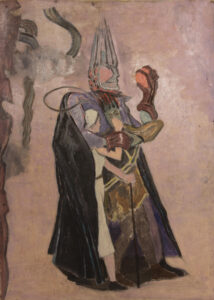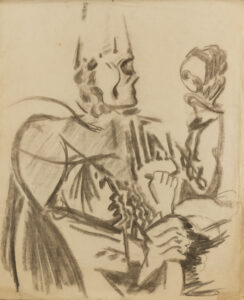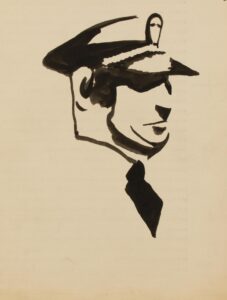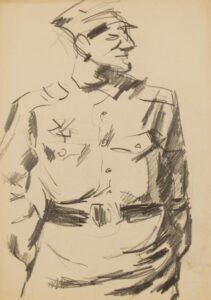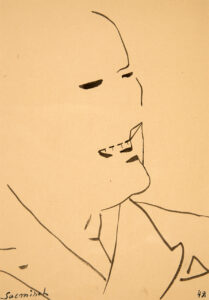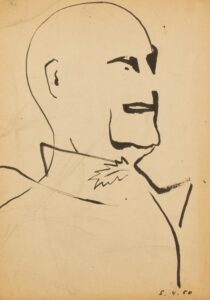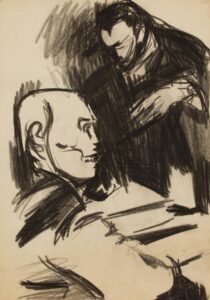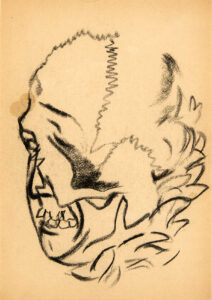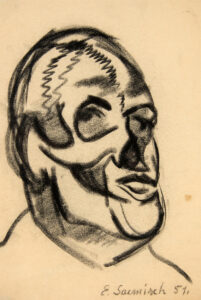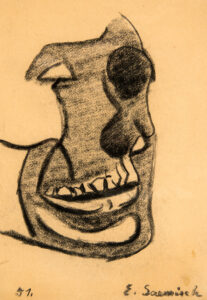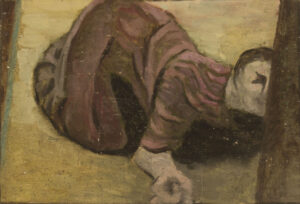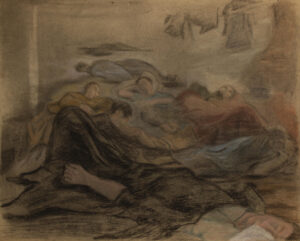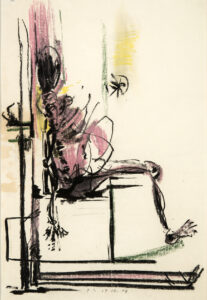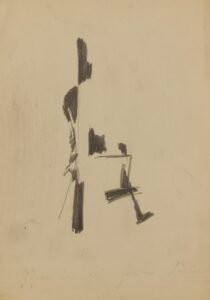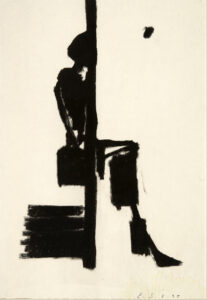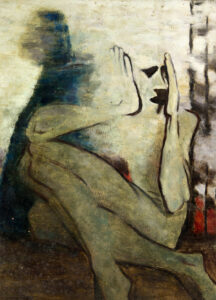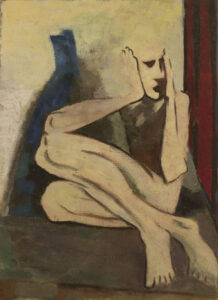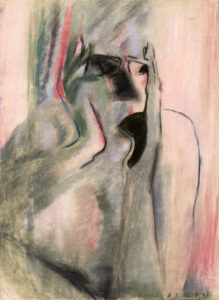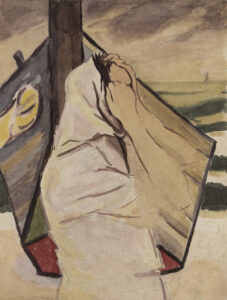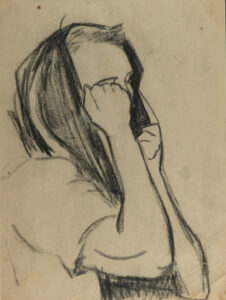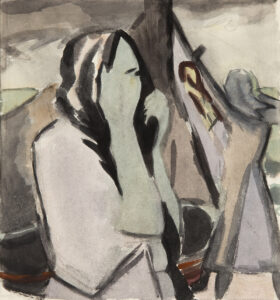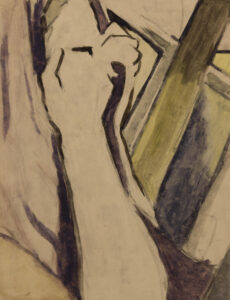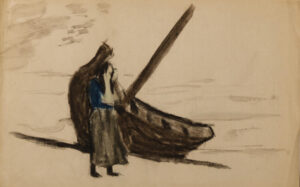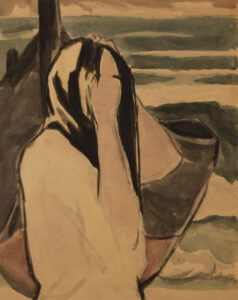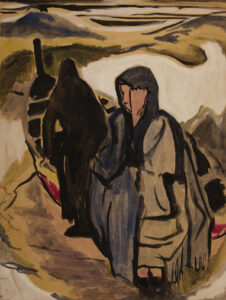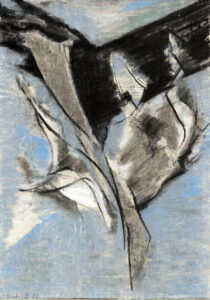Darkness
The outbreak of World War II leads Germany into a militarized economy, where the Nazi government has an asphyxiating control over the life of its citizens. In this context, Saemisch works as a journalist and a foreign correspondent, until the growing threats of the regime force him to move to Finland, where he works with Marshal Mannerheim as a photogrammetrist and draughtsman, making strategic maps.
After Germany’s defeat in 1945, Saemisch faces the inner challenge of processing the atrocities committed by the regime. He spends a decade creating a group of works that vividly capture the horrors of the dictatorship. His grotesque, merciless figures are a poignant reflection of the human oppression and corruption during that period.
But Saemisch’s artistic explorations at the time are not limited to the context of the war; they also branch out into different manifestations of human pain before loss and desolation. The Portuguese Woman series is inspired by a tragic incident in a fishing town in Portugal, when the sea dragged fishermen away.
The woman is scared. She closes her eyes; she doesn’t want to see anything. The only thing happening in the painting is the couple of hands covering the eyes and the wave capsizing the boat. Misfortune has descended upon men, these Portuguese fishermen in high seas. The hurricane sweeps over the sea surface; it “fell upon it” as most would say. It was on the coast of the North of Portugal. The sea of the Bay of Biscay is treacherous. There were many women, children, and elderly people on the beach. As a spectator I felt overwhelmed by all this pain, fear and helplessness. And I left soon. I took my drawings with me. I painted the pictures in this series shortly after the war, which had been in charge of keeping this memory horribly alive in my mind.
ERNST SAEMISCH
